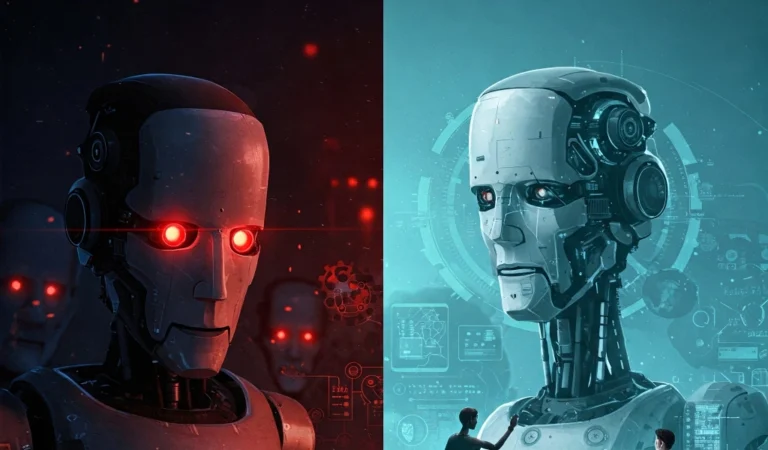Artificial Intelligence has rapidly evolved in the past few years, transforming industries and raising new questions about its role in society. Yet, despite its increasing presence in our daily lives—from smart assistants and AI-generated content to medical diagnostics and autonomous vehicles—AI remains deeply misunderstood.
Let’s cut through the noise. Here are the top 5 myths about AI in 2025—and the truth behind them.
✅ Myth #1: AI Will Replace All Human Jobs
The Claim:
“AI is taking over! Soon there’ll be no jobs left for humans.”
The Reality in 2025:
Yes, AI has disrupted many job sectors, especially those involving repetitive tasks—customer service, data entry, and logistics. But it’s also creating new roles faster than it’s eliminating old ones. Roles like AI ethics officers, prompt engineers, AI trainers, and algorithm auditors didn’t exist five years ago.
According to a 2025 World Economic Forum report, AI will create a net positive of 97 million jobs worldwide by 2030.
💡 AI isn’t replacing humans—it’s replacing tasks. Your ability to adapt is what matters most.
✅ Myth #2: AI Is Already Superintelligent
The Claim:
“AI is smarter than humans and about to take over the world.”
The Reality in 2025:
AI is incredibly powerful in narrow domains—like coding, language translation, or image recognition—but it still lacks general intelligence (AGI). Even GPT-5 and Gemini Ultra, the most advanced models today, can’t reason, feel, or think like humans.
Superintelligence is still theoretical. Leading scientists like Yann LeCun and Geoffrey Hinton have conflicting views, but even the most optimistic timelines for AGI push it beyond 2035.
🤖 Today’s AI is not HAL 9000—it’s more like a super-smart intern that needs clear instructions.
✅ Myth #3: AI Is Always Objective and Unbiased
The Claim:
“AI decisions are data-driven, so they must be fair and neutral.”
The Reality in 2025:
AI is trained on human data—which often contains biases related to race, gender, and socioeconomic status. We’ve already seen cases where facial recognition misidentifies minorities or loan algorithms deny applicants unfairly.
In 2024, the EU and US began enforcing AI transparency regulations, and tools like Google’s AI Model Cards and Meta’s Fairness Flow now aim to identify and reduce bias—but it’s still a work in progress.
⚖️ Bias in → Bias out. AI reflects the imperfections of the data it learns from.
✅ Myth #4: AI Can’t Be Creative
The Claim:
“AI can’t truly create—it’s just copying patterns.”
The Reality in 2025:
AI is helping people create books, music, art, and even video games. Models like OpenAI’s Sora can generate hyperrealistic videos from text. Midjourney and Runway have redefined visual creativity. AI isn’t stealing creativity—it’s enhancing it.
Human creativity still drives storytelling and emotion, but AI has become a powerful co-creator.
🎨 Creativity isn’t just inspiration—it’s iteration. And AI is great at that.
✅ Myth #5: AI Understands What It’s Saying
The Claim:
“If AI can write essays, give advice, and hold conversations, it must understand us.”
The Reality in 2025:
AI generates human-like text by predicting the most likely next word—not by understanding the meaning behind it. This is why AI can sound confident but be completely wrong (a phenomenon known as hallucination).
Even with the latest updates in GPT-5 and Claude 3, AI doesn’t “understand” like we do—it’s still pattern recognition at scale.
🧠 AI simulates understanding. It doesn’t actually “get” you—yet.
🔍 Final Thoughts: Don’t Fall for the Hype
AI in 2025 is more powerful, accessible, and useful than ever—but it’s not magic, and it’s not doomsday tech either. Busting these myths helps us move past fear and hype into responsible innovation, smarter decision-making, and informed adoption.


